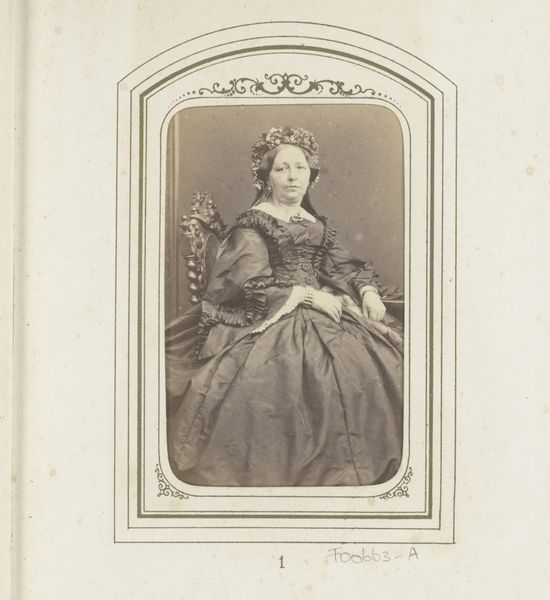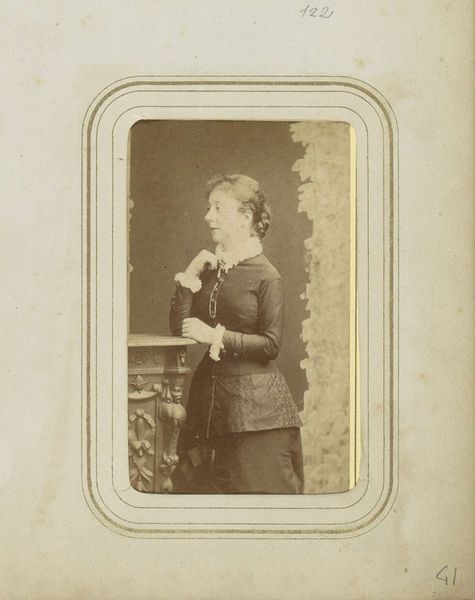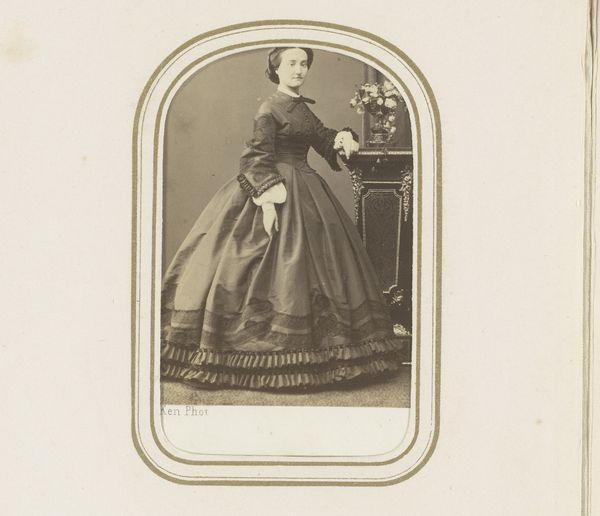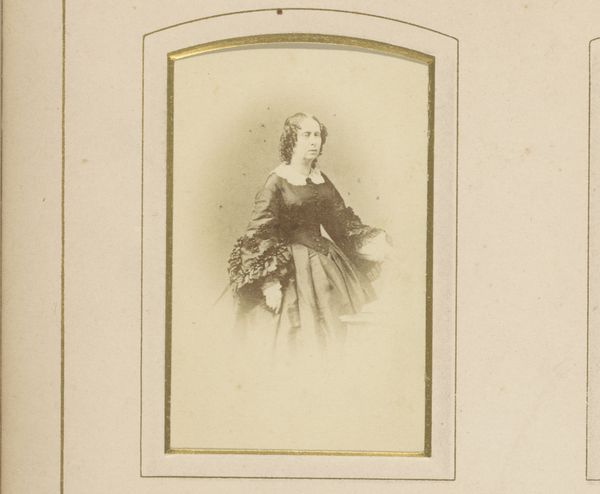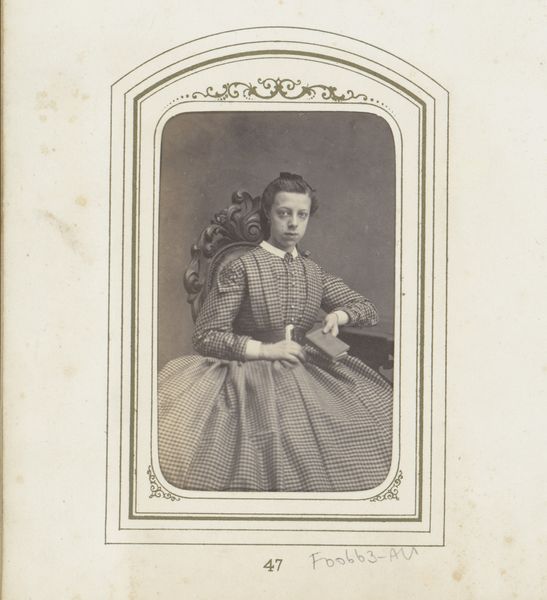
photography
#
portrait
#
aged paper
#
toned paper
#
vintage
#
photo restoration
#
archive photography
#
photography
#
historical photography
#
old-timey
#
yellow element
#
19th century
#
golden font
Dimensions: height 85 mm, width 53 mm
Copyright: Rijks Museum: Open Domain
Curator: "Portret van een zittende vrouw," an albumen print made sometime between 1857 and 1864 by Wegner & Mottu. The sepia tones and formal pose give it a very classic, almost stoic, feel. It's amazing how photographs like this give us a direct glimpse into the 19th century. What strikes you most about it? Editor: Well, the subject’s attire and the ornate chair suggest a certain social status. I'm curious, how would an image like this have functioned in society at the time? Was it purely personal, or did it have a broader public role? Curator: That’s a very insightful question. In the mid-19th century, photography was becoming increasingly accessible, moving from the realm of the elite to a wider middle class. This type of portrait offered a form of social documentation and self-presentation. The subject, through her clothing, pose, and the inclusion of props like the chair, actively constructs an image of herself. Editor: So it was a deliberate construction of identity, made possible by this new technology? Curator: Precisely. These portraits served to solidify social standing, family history, and even personal aspirations. Think about it: What did it mean for ordinary people to suddenly have control over how they were represented and remembered? Editor: That's fascinating! I guess photography wasn't just about capturing reality, but also about shaping perceptions and even influencing the subject's social standing. Curator: Exactly. The rise of photography contributed to a shift in how people perceived themselves and their place in society. This photograph becomes an interesting cultural artifact, telling us as much about the sitter as about the values of the time period. It opens up many possibilities for studying its use in historical photography. Editor: I never thought about it that way, this photo opens many different research directions. Thanks for illuminating its broader social implications! Curator: You're welcome. Seeing art as a reflection of societal forces truly enhances our appreciation.
Comments
No comments
Be the first to comment and join the conversation on the ultimate creative platform.


